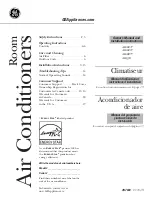
VERSION 3
05/01/2021
I
NSTALLATION AND
U
SAGE
G
UIDE
WINESP40DUPRO
Page 12
2.6.1
INSULATION OF WALLS, CEILING AND FLOOR
Choice of insulating panels
Manufacturers offer different insulating panels:
-
Insulation alone,
-
“Complexes”, or
insulation with facing (plaster, mineral, etc.),
-
Sandwich panels, or insulation faced on each side with wooden or plaster boards.
Important:
The facing
protects the insulation from impacts and thus ensures durability.
Avoid
using mineral fibre insulation
(glass wool, rock wool, etc.) as it may absorb humidity and lose its
insulating capacity, and also fine insulation materials that are not effective against the cold.
Floor insulation
The floor of the room must support the weight of the shelving and the wine. That is why the selected
insulation must offer sufficient compressive strength.
Resistance to piercing (feet of shelves in particular) achieved with:
-
Insulation complexes
with a sufficiently strong panel on the top.
-
Insulation lined with wood chipboard
(approximately 15 mm thick), or any other appropriate
covering (e.g. screed and slab).
2.6.2
DOOR
It helps to keep the insulation continuous. Two solutions are possible:
-
Insulating the existing door with insulation of the same type as on the walls of the room
and inserting a seal (e.g. in foam) between the door leaf and frame, over the entire perimeter.
-
Using a WINEMASTER
®
insulating door
with polyurethane foam and a seal over its entire
perimeter.
2.6.3
INSULATION OF OTHER ELEMENTS
Do not place a wine cabinet or a freezer
in the room, as they produce heat.
Central heating pipes must be reinsulated
if they are routed in the room.
Top view
1
Insulating door
2
Insulation
3
Seal
DID YOU KNOW?
Some insulating materials are damaged by rodents (mice, rats, etc.). That is why you need to make
sure that the walls of the room do not contain any holes that would allow rodents to get to the
insulation. Such insulation must be covered on the inside of the room with protective facing.
→
Because of its chemical composition, polyurethane insulation is not attacked by rodents.











































